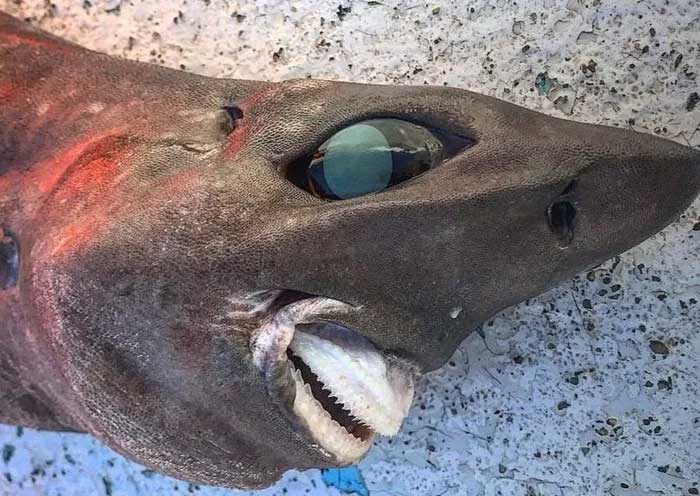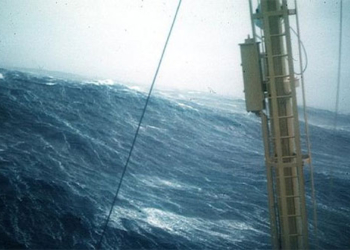A fisherman in Australia has caught a fish resembling a shark, complete with protruding teeth and wide, astonished eyes, sparking discussions about this mysterious creature.
Trapman Bermagui, a fisherman from Sydney, Australia, shared a photo on Facebook on September 12, describing it as the “face of a deep-sea shark” caught at a depth of 650 meters underwater. This shark has a unique appearance with rough skin, a pointed nose, large eyes, and sharp, protruding teeth.

The strangely shaped shark caught by Australian fisherman Trapman Bermagui – (Photo: Facebook)
Within two days, the post garnered over 250 comments and approximately 1,400 likes. Some commenters suggested that this shark might belong to the cookiecutter shark, also known as the cookie-cutter shark (Centrophorus granulosus), the smallest member of the shark family.
However, speaking to Newsweek, Bermagui insisted that this is “definitely not a cookiecutter shark.” “It is a species of sleeper shark. These sharks are usually found at depths greater than 600 meters. We often catch them in winter,” Bermagui stated.
Dean Grubbs, the Associate Director of Research at the Florida State University Coastal and Marine Laboratory, also believes that the fish caught by Bermagui appears to be Centroscymnus owstoni, commonly known as the sleeper shark.
“In my deep-sea research, we have caught quite a few of these species in the Gulf of Mexico and the Bahamas. They come from depths of 740 meters to 1,160 meters. They are a type of sleeper shark in the family Somniosidae.”
According to the description of this species on the Smithsonian Tropical Research Institute’s website, sleeper sharks have a short mouth and thick lips, reaching sizes of up to 120 cm, and are typically found at depths of up to 1,500 meters.
However, Christopher Lowe, a professor and director of the Long Beach Shark Laboratory at California State University, offered a different perspective on the shark caught by Bermagui.
“It looks like a deep-sea mako shark found off the coast of Australia. We are always discovering new deep-sea shark species, and many of them look very similar,” Professor Lowe commented.





















































